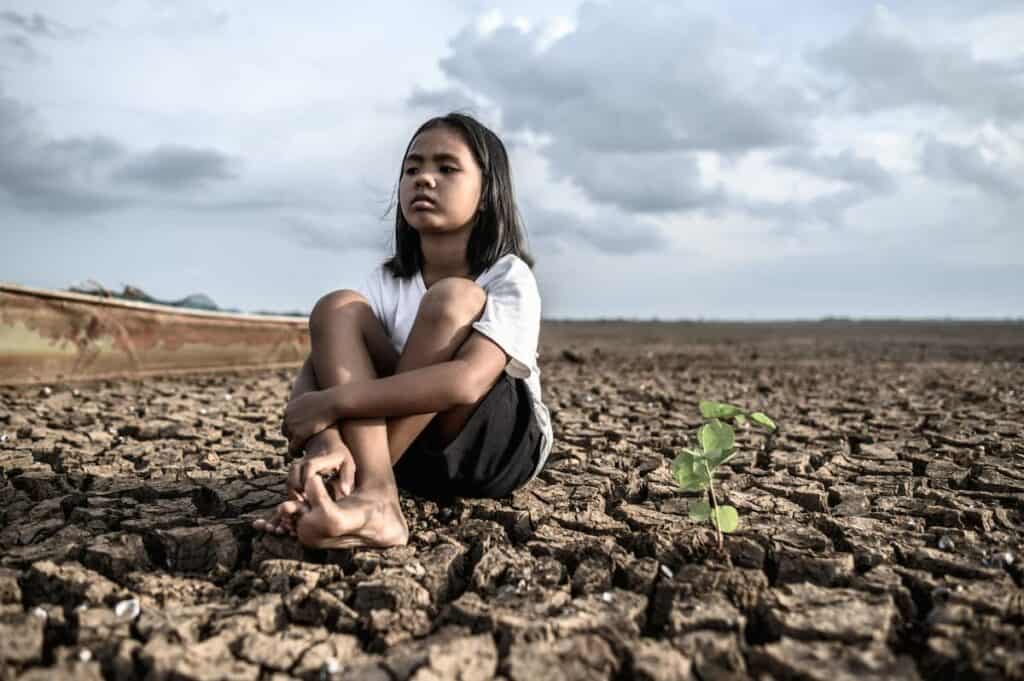In today?s news, we will look into the significant study by nearly 100 specialists concluded that as global temperatures rise, there are severe effects on human health, particularly our mental health. The World Health Organization has published a list of fungi that are dangerous to human health in its most ambitious attempt to raise awareness of a constellation of infections that are widely ignored, despite the fact that they are becoming more prevalent, resistant to treatment, and lethal. A new MIT technology identifies the optimal policy arrangements for improving health.
Table of Contents
ToggleGlobal warming threatens human health, report warns
Original Source: Increasingly warming planet jeopardizes human health, major report warns
As global temperatures rise, so do health implications, especially mental health, according to a Lancet Countdown report by 100 experts, including the WHO. This 7th annual study builds on earlier publications to warn about global warming’s health effects.
Some implications of record-high temperatures are predictable, such as increased disease due to heat waves and high temperatures, but others, such as higher risk of mental health problems and infection spread, can have global impacts, the paper stated.
According to the findings, extreme temperatures and heat waves are linked to mental illness and suicidality.
Dr. Marina Romanello, executive director of the Lancet Countdown on Health and Climate Change report, told ABC News that climate change affects mental health in multiple ways.
“Some are more visible and easily attributed, like the mental health implications of extreme weather events,” Romanello added. Extreme heat exposure has been linked to increased interpersonal aggression, crime, and self-harm.
Young people are more prone to despair, anxiety, substance usage, and sleep problems due to climate change, the report found.
“84% of young people are moderately to extremely scared about climate change,” Dr. Elizabeth Haase told ABC News. Extreme weather causes more drug and alcohol misuse, child abuse, domestic violence, poverty, bad diets, homelessness, and damaged families and communities.
Increased temperatures also threaten our physical health, the paper says.
From 2000-2004 to 2017-2021, heat-related fatalities among the elderly climbed by 70%. Extreme heat causes heat stroke, renal damage, and worsens heart and lung disorders. With rising temperatures, some infectious diseases spread and survive more, increasing the danger of outbreaks.
Use of fossil fuels causes climate change and associated health problems. Fossil fuel consumption has also worsened air pollution, contributing to over 1 million deaths in 2020.
“Climate change’s health effects are accelerating. It’s deadly “Dr. Georges Benjamin told ABC News. “The latest Lancet research reveals climate change’s global impact.”
Is our health system, already stretched thin by the COVID-19 pandemic, equipped to handle these possible consequences? False. “The health sector’s response has been inadequate and must be drastically improved,” Benjamin stated.
Scientists warn society may be unprepared for climate change’s mental health implications. Dr. Vivek Murthy released a juvenile mental health advice in December.
Recent increases in the number of adolescents receiving mental health assistance have strained our already understaffed system. Climate change will boost demand for these services.
Only a minority of countries have considered the mental health consequences of climate change in their action plans, and only one in four countries report incorporating mental health into disaster preparedness programs.
“This demonstrates we aren’t prepared to cope with and limit the projected increase in mental health repercussions from climate change,” Romanello added.
Top Fungal Health Threats Listed by W.H.O.
Original source: W.H.O. Lists Top Fungal Health Threats
The WHO has ranked fungi that risk human health in an effort to call attention to a constellation of infections that are usually disregarded while becoming more prevalent, resistant to treatment, and lethal.
The organization highlighted 19 invasive fungal illnesses, including four “important priorities,” that kill 1.3 million and contribute to 5 million deaths annually. Many of these deaths occur in people with HIV, cancer, tuberculosis, and other diseases that make them prone to infection.
Many hospitals and clinics, especially in poorer nations, lack diagnostic equipment for fungal infections, according to health officials.
Dr. Carmem L. Pessoa-Silva, a WHO specialist focused on disease surveillance and control, said at a news conference on Tuesday that invasive fungal infections are growing increasingly common yet are often misdiagnosed and mistreated. We don’t understand the problem’s scope.
The WHO presented the report as a call to action and hoped it would increase urgency among governments, drug developers, clinicians, and health policy specialists.
The W.H.O. says climate change has helped spread several illnesses. The coronavirus pandemic has also contributed to an increase in fungal infections among Covid patients in intensive care units, where organisms like Candida auris thrive and enter the body through breathing tubes and intravenous lines.
Mucormycosis, a rare but tenacious virus called “the black fungus,” has infected hundreds of Covid users in India, requiring disfiguring facial surgery to eradicate the infections.
Antifungal drugs have lost their curative punch in recent years, much like harmful microorganisms that mutate and become antibiotic-resistant via overuse in people and agriculture. Rising resistance to Aspergillus fumigatus, a common mold that can kill persons with low immune systems, has been linked to the widespread use of fungicides on cash crops like grapes, corn, and cotton.
Once a fungus reaches the bloodstream, therapy gets harder. Candidiasis has a 30% fatality rate. Patients with Candida auris, one of the four “important priority” fungi in the WHO study, have a far higher mortality rate. The yeast, initially found in Japan in 2009, has spread to 40 countries and is often drug-resistant.
Dr. Hatim Sati, a W.H.O. official who helped develop the paper, said only four kinds of medications address fungal infections. Some people can’t safely use many existing medications, he noted.
Doctors and experts applauded the W.H.O.’s move to highlight fungal infections. Fungal illnesses have been overlooked despite their exponential growth, said Dr. Cornelius J. Clancy of the VA Pittsburgh Health Care System, who did not contribute to the paper.
Global Action for Fungal Infections CEO Dr. David Denning stated insufficient surveillance contributed to the neglect.
Failure to recognize fungal infections means patients go untreated, he said, citing Kenyan study that suggested better surveillance for fungal meningitis would save 5,000 lives yearly among HIV patients.
Widespread testing would cost $50,000 each year, he claimed.
Dr. Denning stated a missed diagnosis has invisible effects. He cited a leukemia patient who develops a deadly fungal infection. If someone dies of a fungal illness, their family may donate to a leukemia charity, he said. Because of leukemia, they won’t donate to a fungal disease organization.
Improving public health by coordinating climate and air-quality policy
Original source: Coordinating climate and air-quality policies to improve public health
The Inflation Reduction Act is America’s largest climate change investment, reducing greenhouse gas emissions by 40 percent below 2005 levels by 2030. The proposal will bring the U.S. closer to its worldwide climate obligation and improve the nation’s health. If effective in expediting the transition from fossil fuels to renewable energy alternatives, the IRA will drastically reduce atmospheric concentrations of fine particles known to exacerbate respiratory and cardiovascular disease and cause premature deaths. A recent study found that eliminating fossil fuel air pollution in the contiguous U.S. would prevent more than 50,000 premature deaths and save $600 billion annually.
National climate policies like the IRA’s can help reduce climate change and improve air quality, but their effects on public health may differ. Some places and economic sectors would benefit more from improved air quality than others. Climate and air-quality regulations can optimize these benefits.
Several earlier research assessed the health implications of various policy combinations, but their relevance was restricted by a small number of common policy situations. More flexible modeling tools are needed to examine the effects of climate and air-quality policy combinations on air quality and human health. Now, MIT researchers have developed a publicly available, adaptable scenario tool.
In a report published in Geoscientific Model Development, the MIT team unveils its Tool for Air Pollution Scenarios (TAPS), which can evaluate the air-quality and health impacts of a wide range of climate and air-quality policies at the regional, sectoral, and fuel-based level.
The study’s principal author, William Atkinson, was a Biogen Graduate Fellow and research assistant at the IDSS Technology and Policy Program’s (TPP) Research to Policy Engagement Initiative. Climate action doesn’t ensure clean air, but the concerns have comparable roots that imply common solutions if done well.
With present air-quality policies and near-term Paris Agreement climate promises alone, short-term pollution reductions give way to long-term rises, given the predicted growth of emissions-intensive industrial and agricultural operations in emerging regions. More ambitious climate and air-quality initiatives could reduce different pollutants to improve global health.
Co-author C. Adam Schlosser of MIT’s Joint Program said the study helps identify long-term emission reduction techniques that improve air quality. Setting healthy climate goals is a win-win.
TAPS projects air quality and health outcomes based on three integrated components: a recent global inventory of detailed human emissions (e.g., fossil fuel combustion, land-use change, industrial processes); multiple scenarios of emissions-generating human activities between now and 2100, produced by the MIT Economic Projection and Policy Analysis model; and emissions intensity scenarios based on recent research.
“We see the climate problem as a health catastrophe,” says Johanna Jobin, global head of corporate reputation and responsibility at Biogen. “Evidence-based approaches are important to making the most of this historic investment in the future, especially for vulnerable areas.” Not all climate-related initiatives yield equal health advantages, says the scientific community. We’re pleased of our work with the MIT Joint Program to build this tool to bridge research-to-policy gaps, support policy decisions to enhance health in disadvantaged communities, and teach the next generation of scientists and leaders.
The tool informs decision-makers on climate and air-quality policy. Policy scenarios can be applied to specific locations, industries, or fuels to test policy combinations or target short-term actions with high-impact advantages.
TAPS could account for more emissions sources and patterns.
Our new tool can assess climate and air quality scenarios. As the framework is expanded, we can add specifics for specific geographies and air toxics, adds TPP director and IDSS professor Noelle Selin.
EPA’s Science to Achieve Results (STAR) program, Biogen, TPP’s Leading Technology and Policy Initiative, and TPP’s Research to Policy Engagement Initiative sponsored this research.
Summary of today?s physical health news
Overall, as global temperatures rise, so do effects on our health, particularly mental health, according to a landmark report by around 100 experts, including the World Health Organization. This 7th annual study builds on earlier publications, warning about the health consequences of a warming globe. According to the Lancet analysis, only a minority of nations have included the mental health implications of climate change in their action plans, and only roughly one in four countries report incorporating mental health into their disaster preparedness programs.
Furthermore, the WHO ranked harmful fungi. The organization highlighted 19 invasive fungal illnesses, including four “critical priorities,” that kill 1.3 million and contribute to 5 million deaths annually. Many of these deaths occur in people with HIV, cancer, tuberculosis, and other diseases that make them prone to infection.
Finally, in a study published in Geoscientific Model Development, the MIT team unveils its Tool for Air Pollution Scenarios (TAPS), which can evaluate the air quality and health impacts of a wide range of climate and air-quality policies at the regional, sectoral, and fuel-based level. The tool informs decision-makers on climate and air-quality policy. Policy scenarios can be applied to specific locations, industries, or fuels to test policy combinations or target short-term actions with high-impact advantages.








